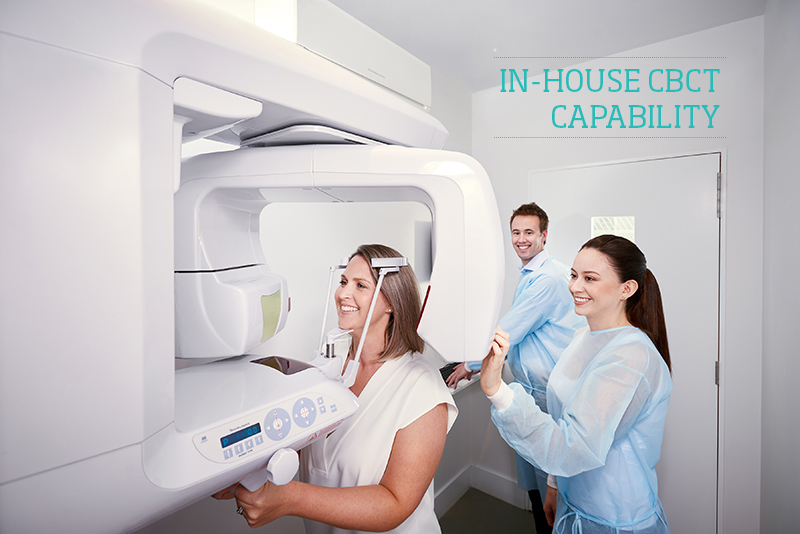Our Endodontic Technology
At the Endodontic Group, you’ll benefit from cutting-edge technology operated by highly trained professionals – it’s this combination of expertise and equipment that makes the Endodontic Group leaders in their field.

Operating microscopes
The operating microscope has become an essential part of endodontic treatment, allowing more accurate and predictable treatment. They allow greater magnification (up to 24x) so we can ‘zoom in’ and see the tooth in greater detail. Operating microscopes also provide perfectly directed shadow-free light, allowing your endodontist to see inside darkened spaces like crowns and root canals.
A Swiss study has shown that even when dentists are wearing loupes (dental magnifying glasses) and have a surgical headlight, they are unable to see any structures past the opening of the root canals. In endodontics this can create a problem as bacteria will hide in those hard to see places leading to failed treatment, which is why operating microscopes are an essential component of endodontic technology. Visibility is also essential in retreatments to allow the endodontist to remove all of the old root filling material from inside a canal.
As well as not being able to see inside root canals without an operating microscope, dentists are often unable to locate calcified canals or extra canals that are always present in molar teeth, and some premolars or incisors. If the extra canals are not found and cleaned the infection and problems will remain.
In addition to locating extra canals and being able to see further down into the tooth to remove bacteria, microscopes enable endodontists to see fine cracks that might otherwise be missed. By picking up cracks early in the procedure an endodontist is able to advise the patient when their tooth is not going to be suitable for endodontic treatment, saving them both money and time.
All of these factors mean that an operating microscope is an essential component of endodontic technology.
CBCT machine
Until the 2000s, radiographic (x-ray) assessment of teeth and root canal treatments was limited to two-dimensional images, which meant some critical information was lost in the imaging process. With the introduction of cone beam computed tomography (CBCT) we are now able to visualise the teeth, jawbones and surrounding structures in three dimensions.
The 3D view of the area provides more information on structures like extra canals, root fractures and other sensitive anatomic tissues like nerves. This information can be critical when diagnosing the cause of your pain, or when planning endodontic microsurgery.
The Endodontic Group has in-house CBCT machines at all its practices, so you can be assured we’ll be using the best possible endodontic technology and you’re receiving the highest standard of care.
Nickel titanium rotary instruments
Made from an alloy of nickel and titanium these fine, specially developed instruments have greater flexibility and resistance to fracture when compared with stainless steel files. This enables them to remove harmful material and follow the intricate curvature of root canals to create the correct shape. The files are driven by a motor, which reduces the need for using hand-held instruments, resulting in predictable, efficient and rapid cleaning, reducing the time required for tooth preparation.
Single-use instruments
Many years ago, the Endodontic Group introduced a policy of single use of endodontic files. Even now, we’re one of the few endodontic practices in Australia using single-use instruments. There are protocols for cleaning and sterilising of endodontic instruments. However, it’s difficult to get consistency in results from these procedures and there’s also the risk of sharps injuries to staff in performing the cleaning process.
Several government agencies around the world, including the United Kingdom, have already recommend the single use of endodontic files. This action has arisen out of concern for the difficulties encountered in the sterilisation of instruments after use, and the possibility that they may act as a vehicle for disease transmission when re-used.
The other major risk with re-use of files is instrument separation or breakage. This risk increases with each use of the files. It can be very difficult to track the number of times instruments have been used and almost impossible to determine how much they have deteriorated. Studies clearly demonstrate the decline in efficiency of endodontic files with each use and if they break inside the tooth they can prevent complete cleaning of the canals.
When we initially considered introducing single-use instruments, we asked ourselves ‘if we were the patient, what would we like used during our treatment?’ Once we answered that question, the decision seemed quite simple.
There are cost implications; however, most patients are quite happy to pay slightly more for the use of new instruments. This ensures our patients enjoy better outcomes and the highest possible standard of care.
To find out more about our endodontic technology, don’t hesitate to contact our friendly team or for a consultation with one of our endodontists, feel free to request an appointment. We’re here to help.





